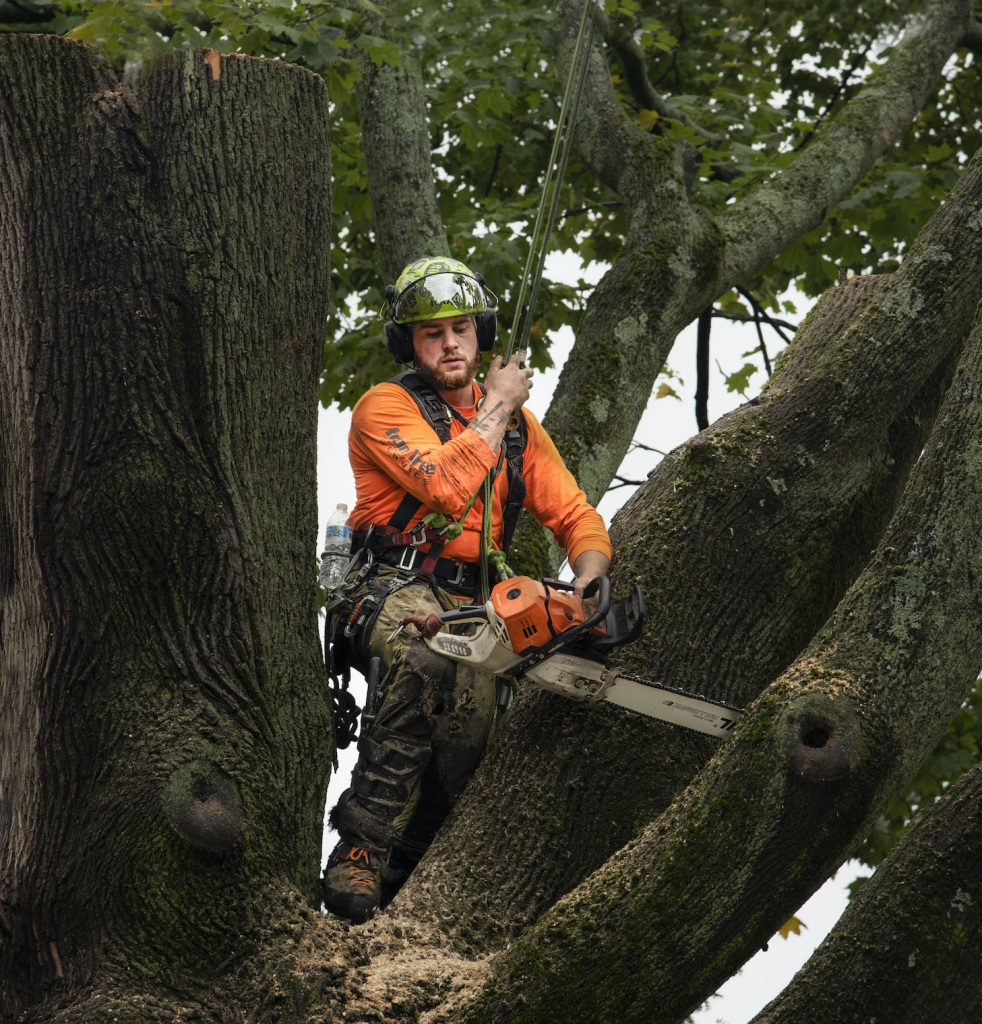Many people have difficulty differentiating between arborists and horticulturists. The dissimilarities between the two will be discussed as you read on.

A horticulture or arborist (sometimes spelled arboriculturist) is someone who tends to plants and trees for a living. There is a clear distinction between the two vocations even though they both require dealing with plants, shrubs, or trees. People who specialize in horticulture and arboriculture seek to better the cultivation of plants and to treat diseased trees and shrubs.
What Is An Arborist?
A certified arborist is an expert in the management and upkeep of trees, shrubs, and other woody plants. You’ll need to do things like remove trees and shrubs, as well as plant new ones, prune and fertilize them, check for and treat any illnesses or pests, and more. It’s common for arborists to work in the landscaping sector, for local governments, or in the power sector.
What Is A Horticulturist?
Horticulturists, on the other hand, are experts in the growth and maintenance of all kinds of plants, from edibles to decoratives. This includes doing things like designing and managing gardens and other landscaped spaces, as well as selecting and cultivating plants that are ideal for a given temperature or location.
Public gardens, greenhouses, and nurseries are just some of the places where horticulturists can find employment.
Horticulturists tend to a larger variety of plants, while arborists specialize in the care of woody plants. There is some crossover between the two fields, and many horticulturists and arborists are well-versed in the needs of numerous plant species. Expertise in plant pathology, entomology, and soil science are all areas in which arborists and horticulturists might excel.
Differences Between Arborists And Horticulturists
Training And Certification
Arborists and horticulturists alike are required to have formal education and training in a related subject such as forestry, horticulture, or plant science. Some arborists opt to get credentials from the Tree Care Industry Association or the International Society of Arboriculture (ISA) (TCIA).
For many certifications, you’ll need to show that you’ve got the knowledge and expertise necessary, along with passing an exam. Certification is more frequent in the arboriculture industry than it is for horticulturists.
Work Environment
Tree climbing and the usage of tools like chippers and bucket trucks are common parts of an arborist’s day. They are not limited to working in rural locations but may do so in urban or suburban settings. Depending on the task, a horticulturist could spend time indoors or out. They might be employed in indoor nurseries, outdoor gardens, or other landscaped areas.
Focus At Work
As was said before, arborists are experts in the care and preservation of trees and other woody plants. Jobs in this category include taking out trees and bushes, identifying and treating illnesses and pests, and fertilizing and trimming them.
In addition to caring for trees and other woody plants, arborists may also be involved in the layout and design of outdoor spaces that feature these elements.
Horticulturists, on the other hand, may tend to flower and decorative plants in addition to food crops. The choice of plants, their care, and the creation and upkeep of gardens and other landscapes might all fall under their purview.
Arborist Salary In Australia
The average salary of an arborist in Australia is quite competitive, ranging from AU$ 40,000 to AU$ 90,000 per year depending on experience and qualifications. Qualifications can include a Certificate III or higher in arboriculture, as well as a Diploma or Bachelor’s degree in forestry sciences.
Those with the highest level of qualifications typically earn the highest salaries. Additionally, those who work in rural or remote areas may receive additional remuneration due to their geographical locations.
In addition to a salary, many arborists may be entitled to other forms of employment benefits such as superannuation contributions, bonuses and overtime pay. Some companies also offer access to car fleet services and travel allowances for employees working out in the field.
Horticulturist Salary In Australia
Salaries for Horticulturists in Australia vary widely depending on the experience, level of education, qualification and area. Entry-level salaries start from approximately $45,000 per annum and experienced professionals can command salaries up to $80,000 or more.
Generally speaking, horticulturists who work in metropolitan areas tend to earn higher salaries than those in regional locations.
The median salary for horticulturists across Australia is currently estimated to be around $64,000 a year. Those with specializations such as plant pathology or soil science may also receive slightly higher wages. Additionally, remuneration packages may include bonuses and other incentives depending on the employer.
In many cases, horticulturists combine their salary with income derived from freelance assignments, consultancy roles or other related activities. This can significantly increase earnings and may lead to higher wages overall.
Overall, horticulturists in Australia tend to enjoy relatively good salaries when compared with other occupations in the field. However, salaries can vary greatly depending on experience and location; therefore it’s important for prospective applicants to thoroughly research the job market before applying for positions.
Additionally, experience and qualifications often play a key role in determining salary so those who are willing to invest time and money into further education or specialist training should be able to benefit from this in the long run.
Conclusion
By having a better understanding of the differences between a horticulturist and an arborist, people can make more informed choices when it comes to home landscaping or tree care in their outdoor spaces. Knowing which professional is best suited for each task allows for the most successful results.
In some cases, both may be needed, such as planting new trees that are also part of an overall landscape design. A combination of knowledge from both fields will provide the best outcome for all gardening projects.
Looking for services, check out arborist services.

